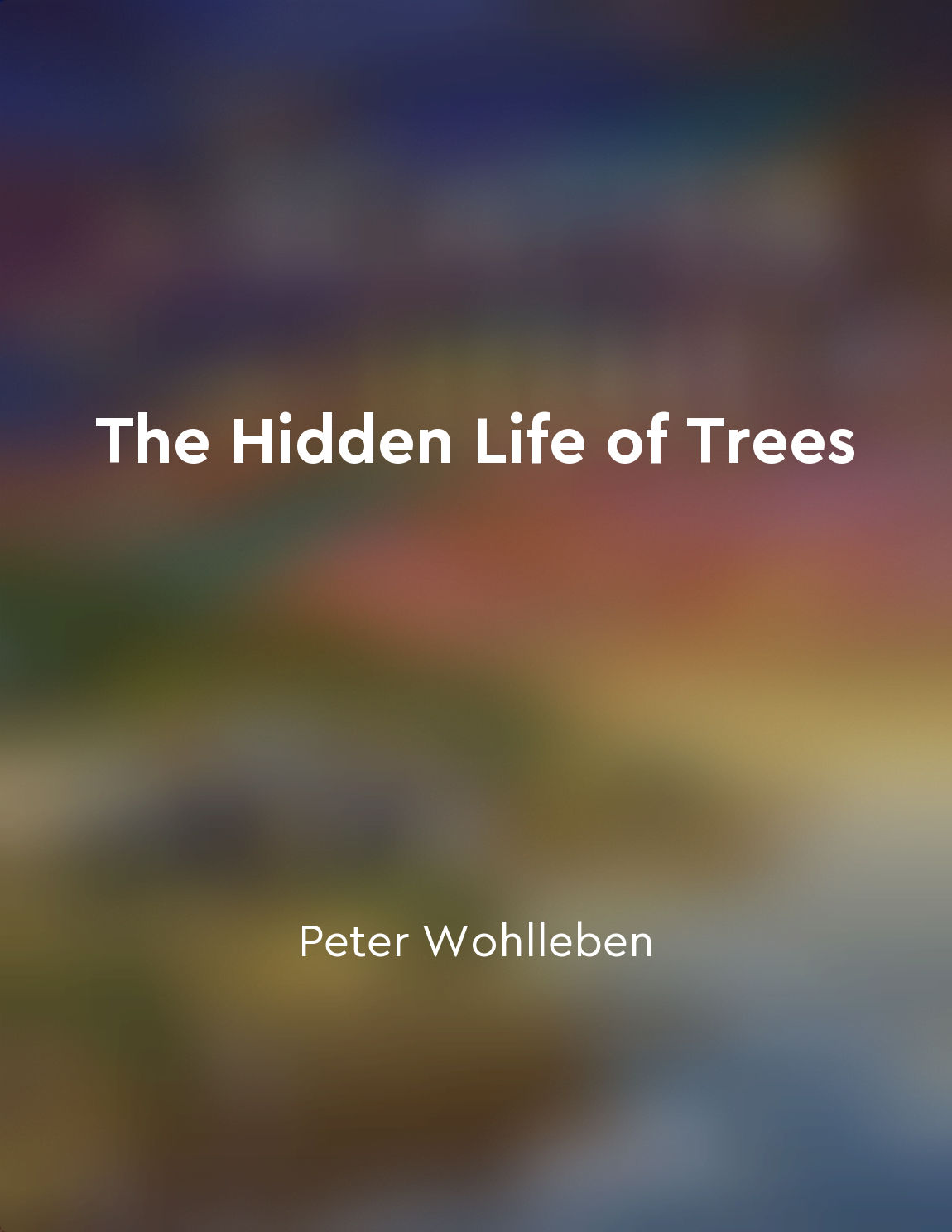Trees communicate through chemical signals from "summary" of The Overstory by Richard Powers
Trees send messages using scent, just as animals do. The perfume of freshly-mowed grass is a distress call, pleading for mercy. A cabbage's bitter funk is an alarm. A pine's turpentine whispers away herbivores. Trees have a language of volatile chemicals that they use to talk to each other. They warn each other of pests, and they call in other creatures to subdue them. The average tree is in touch with its roots, and the roots are in touch with the fungi, and the fungi are in touch with the other trees. They share their surplus carbon with the sick and the old, and they pass along warnings of dangers. They warn their neighbors when they are under attack, and they band together to fight off threats. Trees have been at it for hundreds of millions of years, speaking in a language older than animals. They have learned not just to live, but to survive. They have learned to be each other's keepers. They have learned to be good ancestors. They have learned to pass on the knowledge of how to make a living in a world that's always trying to push them out. They have learned to be in it together. They have learned to be a forest. Forests are not just collections of trees, but communities of trees that work together to keep each other safe and healthy. They share resources, communicate through chemical signals, and even help each other grow. The interconnectedness of trees in a forest is a marvel of nature, a testament to the power of cooperation and communication. By understanding how trees communicate through chemical signals, we can gain a deeper appreciation for the complexity and beauty of the natural world.Similar Posts

Adventures unfold in enchanted forest
As you step into the enchanted forest, a sense of wonder and mystery envelops you. The tall, ancient trees whisper secrets of t...
The diversity of life in Selborne is a wonder to behold
The variety of living creatures that inhabit the village of Selborne is truly a sight to behold. As I wander through the meadow...

Trees are a symbol of hope and renewal
In the forest, there is a silent revolution happening. Trees are not merely objects, but living beings with stories to tell. Th...

They play a crucial role in maintaining ecological balance
In the vast and intricate web of life that encompasses our forests, every single organism has a role to play. Trees, with their...

Trees have unique personalities and characteristics
Trees are individuals, each one with its own distinct identity and essence. They are not simply part of a homogeneous mass, but...

Trees have memories and reactions
Trees carry memories. They remember the way the wind shook their branches, the touch of sunlight on their leaves, the feel of w...

Forests are intricate and interconnected networks
In the forest, everything is connected. The trees communicate through intricate networks, sharing resources and information in ...

They share nutrients with each other in times of need
In times of need, trees, particularly those in a forest, have a remarkable way of coming to each other's aid. When one tree is ...
Environmental activism can make a difference
Environmental activism is a powerful force that can bring about change in the world. It is a way for individuals to come togeth...
